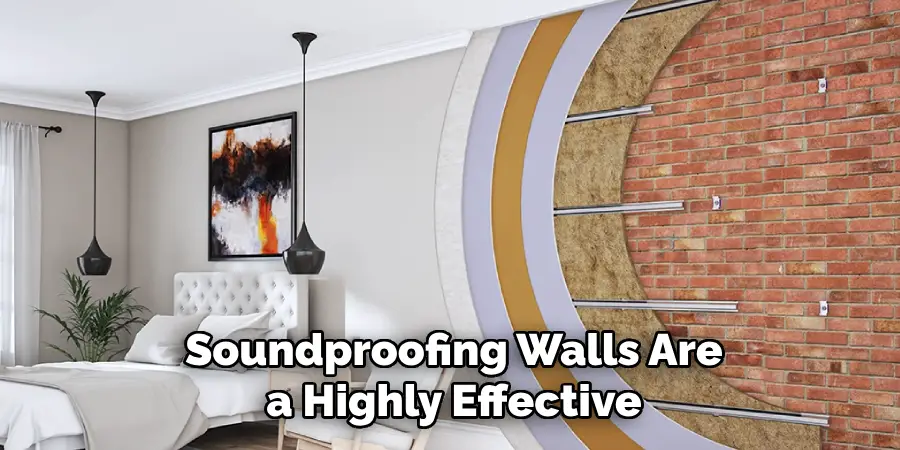Noise pollution from neighbors can significantly impact daily life and well-being, leading to increased stress, sleep disturbances, and decreased concentration. Whether you live in an apartment complex, a townhouse, or a detached home, creating a quiet and peaceful living environment is essential for maintaining mental health and overall quality of life. Understanding how to block noise from neighbors becomes crucial in such scenarios.

This article explores various strategies to help reduce or eliminate unwanted noise, including soundproofing walls, floors, and ceilings, sealing doors and windows, using white noise, optimizing home layout and décor, addressing noise issues directly with neighbors, and considering professional soundproofing solutions. By implementing these methods, you can achieve a quieter, more comfortable home, enhancing your living experience and promoting a sense of tranquility.
Assessing the Source and Type of Noise
Understanding the origin and nature of noise is the first critical step in effectively blocking it from your neighbors.
Identifying the Source:
- Begin by determining whether the noise is emanating from upstairs neighbors, next-door neighbors, or shared walls. Each source may require a different soundproofing strategy. For instance, noise from upstairs may necessitate ceiling soundproofing, whereas noise from next door could be mitigated by soundproofing walls.
Types of Noise:
- It is crucial to distinguish between airborne noise and impact noise. Airborne noise includes sounds like voices, music, or television, which travel through the air and can be more challenging to block. In contrast, impact noise results from physical contact with structures, such as footsteps, furniture movement, or banging, and typically travels through the building materials themselves.
Noise Level and Timing:
- Observing the volume and frequency of the noise can provide insights into the best times and methods for implementing noise-reducing measures. Note when the noise is most prevalent (daytime, evening, or night), as well as the intensity of the sounds. This information will help tailor your approach, whether it be scheduling your soundproofing efforts for when the noise is at its peak or planning a conversation with your neighbors at a time when you are most likely to find them at home and receptive. By accurately assessing the source and type of noise, you can more effectively strategize the best approach to achieve a quieter living environment.
How to Block Noise from Neighbors: Soundproofing Walls
Soundproofing walls are a highly effective method for reducing noise transmitted by neighbors through shared walls. By adding mass, using specialized materials, and carefully sealing any gaps, you can significantly improve the acoustics of your living space.

Adding Mass to Walls:
- Installing Drywall or Mass-loaded Vinyl: One of the most straightforward ways to block sound is by increasing the wall’s density. Adding an extra layer of drywall can enhance the wall’s ability to dampen sound vibrations. For even better results, mass-loaded vinyl (MLV) can be installed. MLV is a heavy, flexible material designed to add mass to walls and block sound. These materials can be applied directly to existing walls and effectively reduce airborne noise.
Using Acoustic Panels:
- Applying Acoustic Panels: Acoustic panels can be mounted on walls to help absorb sound and reduce echo. These panels are often made from materials like foam or fabric-wrapped fiberglass, which are excellent at capturing sound waves and preventing them from bouncing around the room. They come in various sizes, colors, and designs, making them a practical and aesthetically pleasing option for soundproofing.
Sealing Gaps and Cracks:
- Using Caulk or Sealant: Even small gaps and cracks in walls can allow sound to travel through. To prevent this, use acoustic caulk or sealant to fill any gaps or cracks in the walls. Pay special attention to areas around electrical outlets, door frames, and windows, as these are common sources of sound leakage.
Creating a Barrier:
- Placing Bookshelves or Other Large Furniture: Strategically placing heavy furniture, such as bookshelves, wardrobes, or even sofas, against shared walls can create an additional layer of soundproofing. These pieces of furniture add mass to the wall and absorb some of the sound waves, reducing the amount of noise that passes through.
Implementing these soundproofing techniques can effectively reduce the amount of noise that penetrates your walls, creating a more peaceful and quiet living environment.
How to Block Noise from Neighbors: Soundproofing Floors and Ceilings
Reducing noise from above or below requires effective soundproofing of floors and ceilings. By employing a combination of techniques, you can diminish both airborne and impact noises, leading to a quieter and more serene home environment.
Installing Carpet or Rugs:
- Using Thick Carpets or Rugs With Padding: One of the simplest and most effective ways to absorb sound is by using thick carpets or rugs. These not only enhance the comfort of your flooring but also provide a layer that helps to dampen sounds such as footsteps and other types of impact noise. Adding a high-density underpad beneath the carpet or rug can further improve its sound-absorbing properties.

Using Underlayment:
- Installing Soundproof Underlayment: Placing a soundproof underlayment beneath hard flooring materials like wood, laminate, or tile can greatly reduce noise transmission. These underlayments are specifically designed to block impact noise and can be made from materials such as rubber, cork, or foam. They act as a buffer, absorbing the sound before it can travel through the floor and into the adjoining ceilings.
Adding a Drop Ceiling:
- Installing a Drop Ceiling With Acoustic Tiles: For noise coming from upstairs neighbors, installing a drop ceiling with acoustic tiles can be quite effective. This secondary ceiling layer creates an air gap that helps to dampen sound vibrations. Acoustic tiles, which are designed to absorb and diffuse sound, can significantly reduce noise levels, contributing to a more peaceful living space.
Soundproofing the Ceiling:
- Applying Acoustic Panels or Foam: Another approach to mitigating noise from above is applying acoustic panels or foam directly to the ceiling. These materials are excellent at absorbing sound waves and reducing reverberation. Panels come in various styles and can be arranged to complement your home’s décor while improving acoustics.
By integrating these soundproofing methods for your floors and ceilings, you can effectively address both airborne and impact noises. This multi-layered approach not only enhances the tranquility of your home but also adds to the overall comfort and enjoyment of your living space.
Soundproofing Doors and Windows
Effectively soundproofing doors and windows is crucial in minimizing noise infiltration from outside sources. Here are several strategies to achieve this:
Sealing Doors:
- Using Weatherstripping and Door Sweeps: One of the first steps in soundproofing doors is sealing any gaps around them. Weatherstripping can be applied around the edges of the door frame to create a tight seal that blocks sound. Additionally, installing door sweeps along the bottom of the door can prevent sound from seeping through the gap between the door and the floor. Both of these measures help to significantly reduce the amount of noise that penetrates through doors.

Installing Soundproof Curtains:
- Hanging Heavy, Soundproof Curtains Over Windows: Another effective solution is to hang heavy, soundproof curtains over windows. These curtains are typically made from dense materials that block external noise. They also offer the added benefits of providing privacy and enhancing the room’s insulation. By drawing these curtains closed you can mitigate the noise coming in from outside, creating a quieter and more comfortable indoor environment.
Using Window Inserts:
- Installing Soundproof Window Inserts: Consider using soundproof window inserts for a more robust solution. These inserts fit snugly inside your existing window frames, creating an additional insulation layer against noise. Made from materials such as acrylic or glass, soundproof window inserts can significantly reduce noise pollution. They are also removable, allowing for easy cleaning and maintenance while providing an effective barrier against unwanted sounds.
Applying Acoustic Caulk:
- Sealing Gaps Around Windows and Door Frames With Acoustic Caulk: To further enhance the soundproofing of your doors and windows, apply acoustic caulk to seal any remaining gaps around the frames. Acoustic caulk is specifically designed to fill cracks and prevent sound leaks, thereby providing superior noise reduction compared to regular caulk. You can maintain a quieter and more tranquil living space by thoroughly sealing these gaps.
By implementing these strategies for soundproofing doors and windows, you can effectively block out external noise, ensuring a more serene and peaceful home environment.
Adding White Noise and Sound Masking
Integrating white noise and sound masking techniques into your home can significantly enhance your peace and serenity by masking unwanted noises. Here are some effective methods to consider:

Using White Noise Machines:
- Placing White Noise Machines in Rooms to Mask Unwanted Noise: White noise machines generate consistent sound frequencies that can drown out disruptive noises from traffic, neighbors, or other sources. Positioning these machines in bedrooms, living rooms, and home offices can create a more calming and focused environment.
Playing Background Music:
- Using Soft Background Music or Nature Sounds to Drown Out Noise From Neighbors: Soft background music or ambient nature sounds, such as waterfalls, birdsong, or ocean waves, can effectively mask intrusive sounds. Playing these audio tracks subtly in the background is an excellent way to transform your living space into a tranquil retreat.
Using Fans or Air Purifiers:
- Running Fans or Air Purifiers to Create Consistent Ambient Noise That Masks Other Sounds: Fans and air purifiers contribute to improved air quality and produce a gentle, consistent noise that can help mask other sounds. Placing these appliances in key areas of your home can create a soothing ambient noise that enhances your overall comfort and well-being.
Incorporating these white noise and sound masking techniques will provide a practical and effective solution for maintaining a peaceful and quiet living environment.
Improving Home Layout and Décor
Rearranging your home layout and enhancing décor can play a significant role in soundproofing. Here are some strategies you can implement:
Rearranging Furniture:
- Placing furniture like sofas, bookshelves, and wardrobes against shared walls to absorb sound: Placing heavy furniture against shared walls can help reduce noise transmission between rooms. Sofas, bookshelves, and wardrobes act as barriers that absorb and block sound waves, minimizing disturbances from adjacent rooms or neighboring apartments.
Using Soft Furnishings:
- Adding curtains, cushions, and rugs to rooms to help absorb sound: Incorporating soft furnishings into your home décor can further assist in sound absorption. Heavy curtains can block external noise from windows, while cushions and rugs diminish echoes within a room. These elements contribute to a quieter home and enhance the aesthetic appeal of your living space.

Creating Quiet Zones:
- Designating specific areas in the home as quiet zones and optimizing them with soundproofing materials: Identify areas within your home that can serve as quiet zones for relaxation or focused activities. Equip these zones with additional soundproofing materials, such as acoustic panels or thick rugs, to create a serene environment. This focused approach ensures that there are dedicated spaces where you can retreat for peace and tranquility.
By thoughtfully adjusting your home layout and incorporating sound-absorbing furnishings, you can effectively reduce noise and create a more comfortable and harmonious living space.
Conclusion
In summary, the strategies on how to block noise from neighbors covered in this guide include assessing the source of the noise, soundproofing walls, floors, and ceilings, sealing doors and windows, using white noise, improving the home layout, addressing noise at the source, and considering professional soundproofing solutions.
Creating a peaceful living environment is crucial for mental and emotional well-being, and numerous methods are available to achieve this tranquility. By implementing these strategies, you can significantly reduce noise disturbances and enhance your quality of life. The long-term benefits of investing in soundproofing measures include immediate relief from noise and an increase in property value and overall comfort. We encourage you to take the steps this guide outlines to create a quieter, more harmonious home.
You Can Check it Out To Close Off a Room Without a Door.
